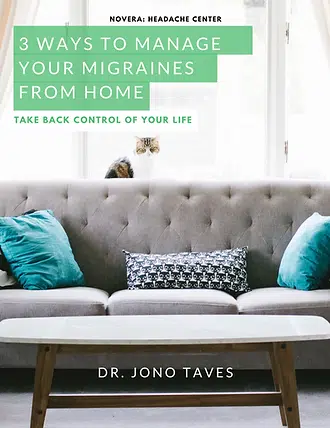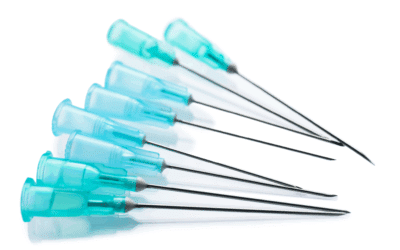Cluster headaches refer to a category of head pain that involves severe, one-sided head pain that occurs in cycles, or “clusters.” Due to their episodic nature, cluster headaches can significantly impact a person’s quality of life, especially when cycles appear without an obvious trigger. Often, these headaches can be ongoing for years, consisting of cycles that may last for weeks or months at a time, followed by a remission period where the headaches stop. This remission period may last for weeks, months, or even years without head pain.
While there are many medical interventions that can provide relief for some, exploring alternative approaches, such as manual physical therapy, may offer additional benefits and a potential long-term solution. Throughout this blog, we will dive into the relationship between cluster headaches and physical therapy, focusing on the importance of joint mobility, especially in the upper cervical spine, temporomandibular joint (TMJ), and shoulders. Understanding how these factors influence posture, muscle tension, and nerve referral patterns can help relieve symptoms and improve overall well-being.
Understanding Cluster Headaches
Cluster headaches are a distinct type of primary headache disorder characterized by severe, unilateral pain, usually concentrated around one eye or temple. These headaches occur in cyclical patterns known as “clusters,” which can last for weeks or months, followed by periods of remission. There are many potential causes of cluster headaches, including things like genetics, smoking, alcohol consumption, and changes in sleep patterns. In our clinic, we have found another cause that regularly goes untreated. We often find that our patients with cluster headaches have significant muscular tension throughout their necks, jaws, and shoulders, resulting in abnormal joint movements, particularly in the upper cervical region. As with many of the different types of headaches we treat, this region is significant because of the nerves entering and exiting the spinal cord at the upper neck levels, especially at C1 and C2.
Because of the massive amounts of nerves leaving the spinal cord in these areas, when tension is present or there is some level of movement dysfunction, it can result in referral pain to the head, eyes, ears, jaw, and neck. When we improve movement patterns throughout the joints and muscles of the neck and shoulders, we reduce the likelihood of that pesky referral pain that causes a headache.
Manual Physical Therapy and Cluster Headaches
While medications and other conventional treatments are commonly used to manage cluster headaches, manual physical therapy offers a different approach that focuses on restoring musculoskeletal balance and optimizing joint mobility. By addressing key areas such as the upper cervical spine, TMJ, and shoulders, manual physical therapy can have a positive impact on posture, muscular tension, and nerve referral patterns, ultimately alleviating headache symptoms. At Novera, our goal is to not only improve this mobility and alleviate symptoms but give you the proper tools to manage your cluster headaches on your own. We take a holistic approach to treatment and emphasize the impact that our day-to-day lives have on our musculoskeletal system. Our hope in taking this approach is that you feel more power over your pain and don’t live your life in fear of the next cycle.
Importance of Joint Mobility
Joint mobility plays a crucial role in maintaining overall musculoskeletal health. When joints become restricted or immobile, compensatory movements and muscle imbalances can develop, leading to postural abnormalities and increased muscular tension. In the case of cluster headaches, limited joint mobility in the upper cervical spine, TMJ, and shoulders can contribute to the compression or irritation of nerves that refer pain to the head.
Upper Cervical Spine and Cluster Headaches
The upper cervical spine, comprising the atlas (C1) and axis (C2) vertebrae, is particularly important in the context of cluster headaches. Dysfunction or misalignment in this region can create tension on the trigeminal nerve and cervical nerve roots, contributing to headache symptoms. Manual physical therapy techniques such as mobilizations, manipulations, and soft tissue work can help restore proper alignment, improve joint mobility, and reduce nerve compression, thereby providing relief from cluster headaches.
TMJ Dysfunction and Cluster Headaches
The TMJ, responsible for jaw movement, can also play a significant role in cluster headaches. Dysfunction in this joint, often caused by poor posture, bruxism (teeth grinding), or dental misalignments, can contribute to muscular tension and nerve irritation, resulting in referred pain to the head. Manual physical therapy techniques such as TMJ mobilizations, myofascial release, and relaxation exercises can help alleviate TMJ dysfunction, reducing tension in the head and alleviating cluster headache symptoms.
Shoulder Mobility and Cluster Headaches
The shoulders are another area that should not be overlooked when addressing cluster headaches. Poor shoulder mobility and posture can lead to increased muscular tension and compression of nerves, both in this region and throughout the neck, resulting in headache symptoms. Manual physical therapy techniques, including joint mobilizations, stretching, and strengthening exercises, can improve shoulder mobility, correct imbalances, and relieve tension in the surrounding musculature. By addressing these issues, manual physical therapy can help reduce the occurrence and severity of cluster headaches.
Cluster headaches can be incredibly debilitating, impacting various aspects of a person’s life. While medical interventions are commonly used to manage these headaches, exploring alternative therapies such as manual physical therapy can provide additional relief and improve overall well-being. By addressing joint mobility, particularly in the upper cervical spine, TMJ, and shoulders, manual physical therapy can correct musculoskeletal imbalances, reduce muscular tension, and alleviate nerve compression, ultimately reducing cluster headache symptoms. If you suffer from cluster headaches, give our office a call today to book a free discovery visit to discuss your symptoms and how we can help!




